UC Blogs
All the Way from Down Under
One of the most prominent and distant--as in far away--visitors to the Häagen-Dazs Honey Bee Haven, the half-acre bee friendly garden...
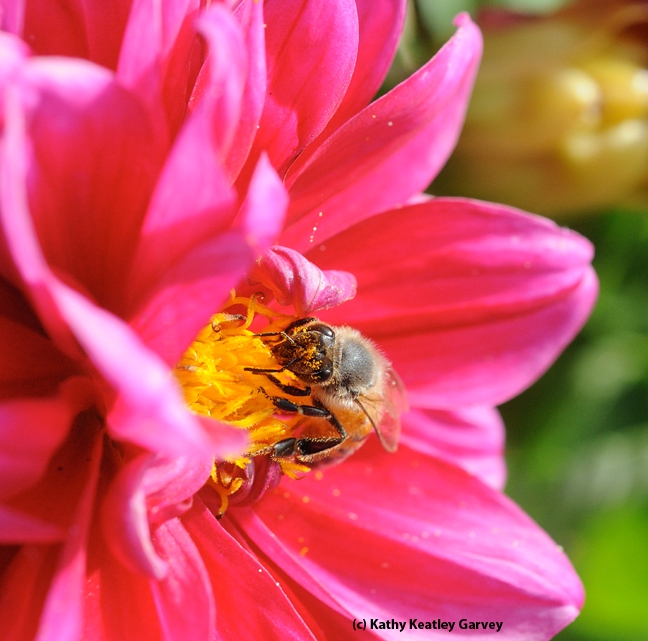
This photo of a bee foraging on a zinnia, taken in the Haagen-Dazs Honey Bee Haven, graces the front and back covers of "Bee Friendly: A Planting Guide for European Honeybees and Australia Native Pollinators." (Photo by Kathy Keatley Garvey)
Broccoli Success
Recently, in Late September, we harvested our first broccoli (Brassica oleracea) head of the season. It tasted so good! I planted a 4” transplant in early September and it really took off. At the same time I planted a six pack of ‘Green Comet” and as we head into the third week of October, we are picking them one by one. Of all the winter vegetables, broccoli is my favorite because it just keeps on producing. First the large center head then a week to ten days later the side shoots. The shoots get smaller and smaller with each harvest. Finally the shoots are so small they are hardly worth cooking so I just throw them into salads. A bonus of broccoli is the leaves are tasty, too. We add them to our vegetable smoothies.
The biggest problem I have encountered growing broccoli is the imported cabbage worm. When I see white butterflies with one or two spots on their wings fluttering around the garden I take heed! It is the Cabbage Butterfly (Pieris rapae) laying eggs on the underside of the leaf. Males have one spot on each wing and females have two. The larvae are little velvety-green imported cabbage worms so named because they feed on members of the cabbage family (Cruciferae), and believe me they can do lots of damage to the leaves plus get right into the heads. Over the years I have tried a number of methods to deal with the little pests. First I ignored them. That didn’t work out so well as the leaves had big holes in them and the florets harbored little green worms. I picked them out as best I could before I cooked the broccoli but occasionally I missed one and it showed up as a brown cooked worm on the plate. Yuck! My family did not appreciate them!
My second method was to pick off the eggs on the underside of the leaves. They are little yellowish bullet shaped single eggs and fairly easy to see. That was a lot of work and I missed some which left me with the same problem as method #1. So, one year I tried method #3. I used row covers to keep the butterflies out. But, a few sneaky butterflies got under the cover and had their way with my broccoli. I didn’t realize I had a problem until it was too late because I was sure my precious plants were protected and therefore didn’t check the leaves for eggs. It turned out worse than method #1or #2. Now I use method #4 and the broccoli is beautiful with minimal holes in the leaves and no little green worms in the florets or on my plate.
Method #4. I don’t like the hassle of mixing and spraying pesticides on my garden, but I have finally zeroed in on a successful method to deal with the little green caterpillar/worms. When I see the white butterflies I know the green worms will follow in three to five days and they will take two to three weeks to mature so I mix the liquid concentrate B.t. (Bacillus thuringiensis) and spray. B.t. is an organic product that I first used way back in the 70s when I started vegetable gardening (it was a powder then). I spray a very fine mist on the leaves once every 5 to 7 days while the butterflies are active. I try to be vigilant as there can be two to four generations in the spring and fall.
Here is a little secret. Use use Spray- Grip along with B.t. because the spray will not bead up and run off the leaves but will adhere to the leaves and turn them a darker green while the spray is wet so you know which plant you have covered. B.t. is a natural bacterium and needs to be used up the day it is mixed. It only kills the caterpillars or worms feeding on the plant and will not harm birds, earthworms or other beneficial insects such as honey bees and ladybugs. Plus, it can be used up to and on the day of harvest. There is only one thing that would make this method easier and that is to be able to purchase the spray pre mixed and not have to use it up each time. Well, guess what? That is exactly what is coming this spring to our nursery. That is a product I will be watching for to ensure success with broccoli.
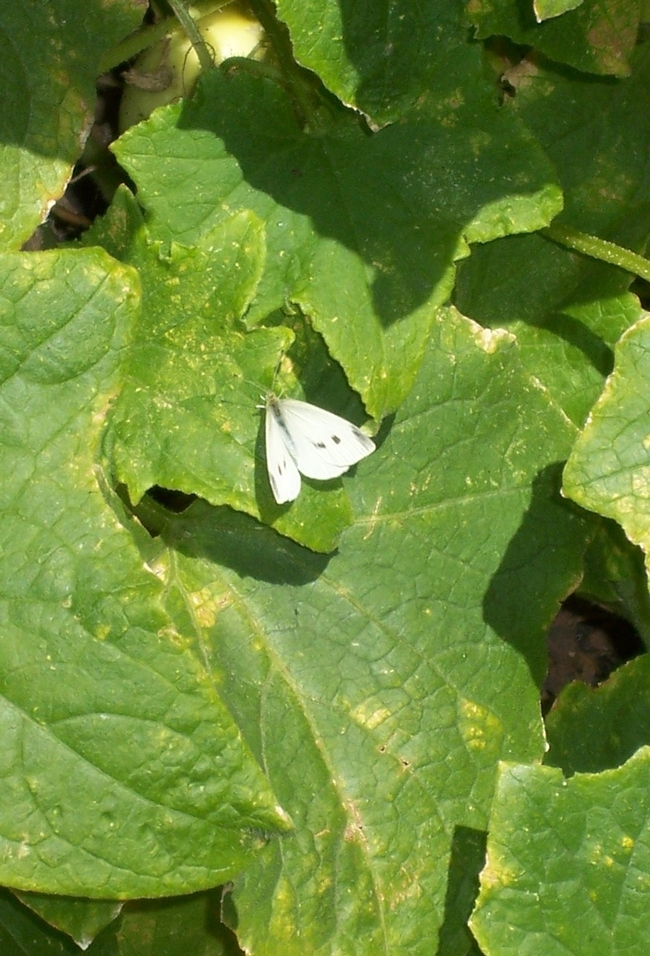
Female Cabbage Butterfly (Pieris rapae). (photos by Libbey McKendry)
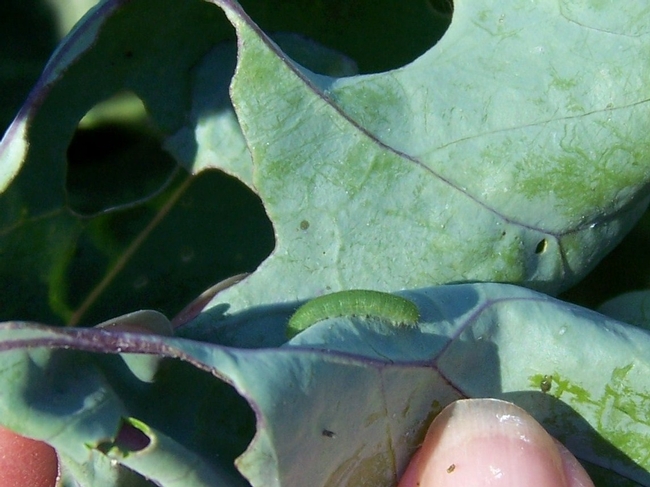
The larvae are little velvety-green imported cabbage worms.
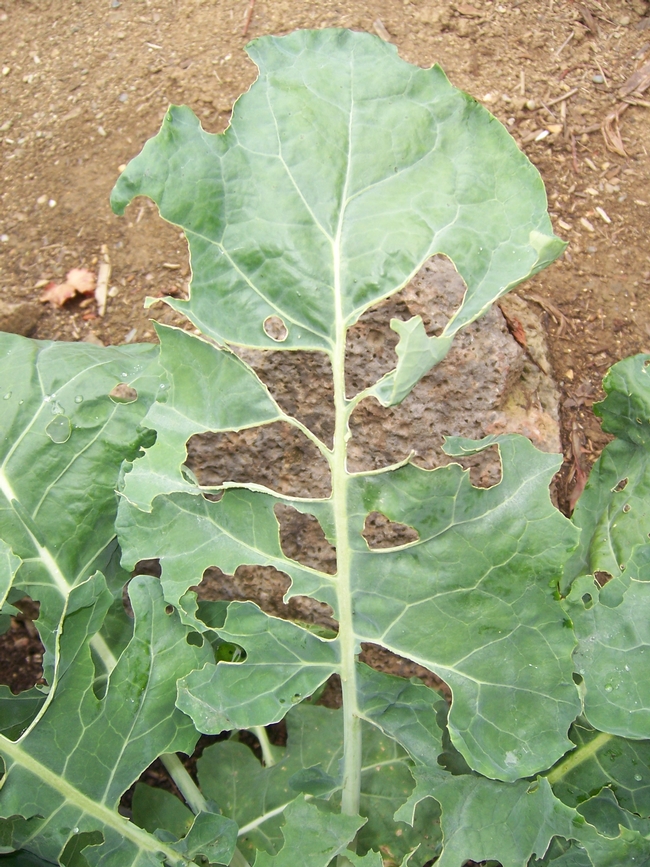
Leaf damage when left alone.

Broccoli Success!
Things That Go Bump and Boo in the Night
It was about things that go bump and boo in the night during the annual Bohart Museum Society's Halloween party. The society's annual Halloween...
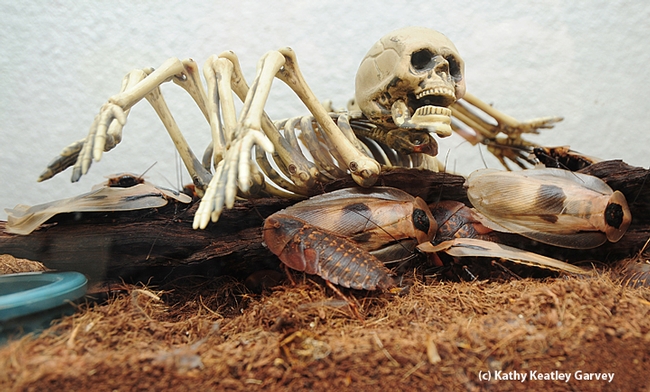
Skull shares the habitat of the giant cave cockroah (Blaberus gigante). (Photo by Kathy Keatley Garvey)
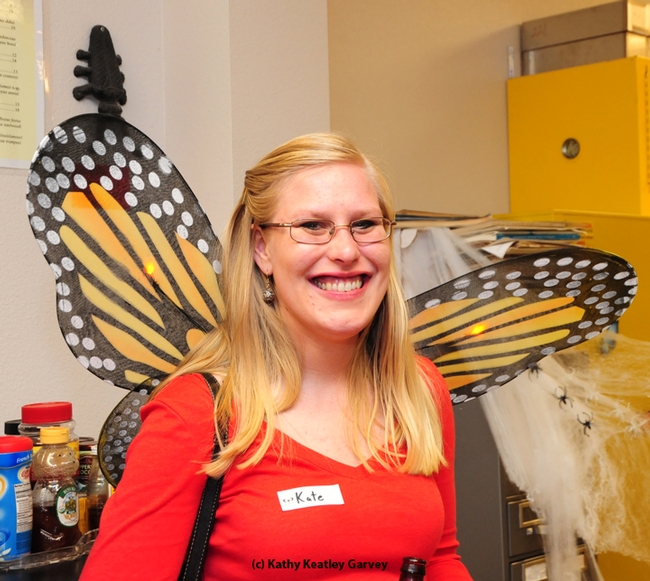
Kate Brown, a third-year UC Davis School of Medicine students, with her Monarch wings. (Photo by Kathy Keatley Garvey)

Entomologist Leia Matern answers a question from her daughter, Tilly. (Photo by Kathy Keatley Garvey)
HAY EXPORTS FROM WESTERN STATES HAVE INCREASED DRAMATICALLY
For those of you not yet convinced that we live in an increasingly international economy, button up your Dacca-made parka– globalization is...
My Foe-Bermudagrass!
I’m fighting – and losing at this point – with Bermudagrass (Cynodan dactylon). Have you ever had a gardening problem, be it a weed or much-loved plant which fails to thrive, which has you thinking that TNT might be a good herbicide? I have but I’ve decided that explosives might be frowned upon during an IPM discussion.
My foe came into my yard courtesy of my neighbor. Evidently, at one time, they had a lawn in the backyard which extended from the house to the back fence and almost as wide as the entire yard. I never had any stolons come creeping into my yard UNTIL they had a concrete contractor come to install a patio. Well, very soon after that, came little fingers of green from under the fence and into my side yard. Eek, a mouse, er I mean Bermudagrass!
Realizing that since I left to work at 4:30 a.m. and returned around 5pm, I had no time for this “little” green invasion, I put the other adult at home to work (or so I thought). My plan was for Bruce to use the spray bottle of herbicide on the grass slowly creeping toward my roses, but he thought the plan was to merely report the progress the grass was making! Pretty soon, it seemed like only mere minutes, my yard had disappeared under a sea of thick stems and fine leaves. What to do?
Since the day I discovered that “his” plan was not “my plan”, we have been preparing to do battle! Since merely pulling the long, knotty and rather strong strands of grass is not working and our backs are tired; we have gone directly to the last step of IPM and selected our chemical allies.
This process was rather easy since reading the labels on the containers (the 1st step) eliminated a number of products right off the bat. Using gyphosate will not do as it is a non- selective weed-killer and kills grasses as well as broadleaf plants. That left only the selective dicot (grasses) herbicides. By looking around, reading labels, and asking professionals for suggestions, we are using a product whose main ingredient is fluazifop which can be sprayed over the top of roses, daylilies, and other plants which are in my yard. Hopefully next year my acreage of Bermudagrass will be smaller and what I planted will be visible. That will be extremely satisfying to Bruce and me!
All in all, I guess I should be happy that my neighbors didn’t plant either “running” bamboo or horsetail reeds!
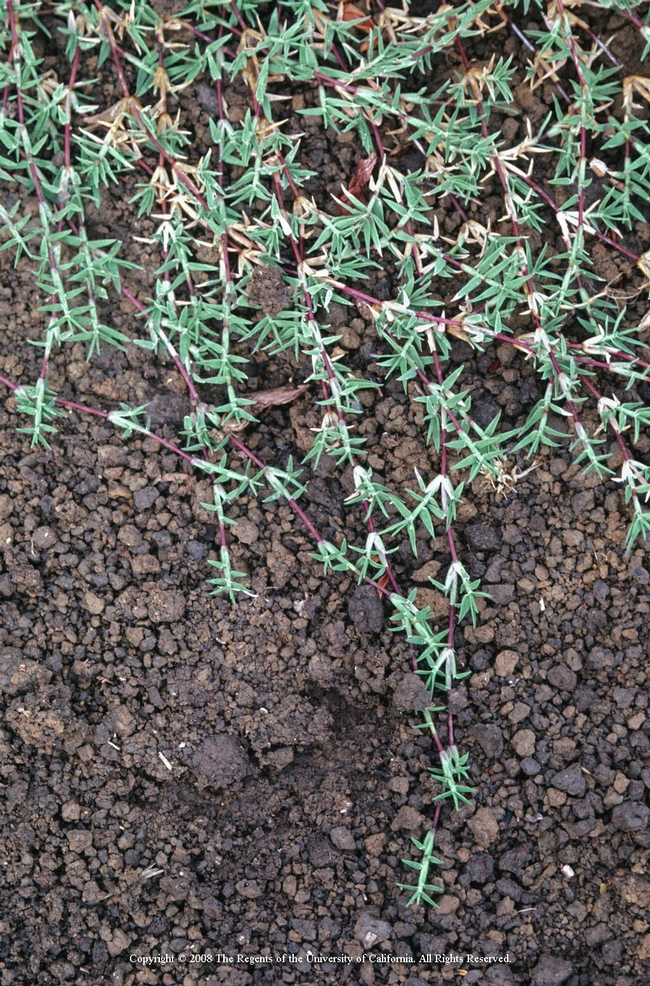
Mat of bermudagrass.

